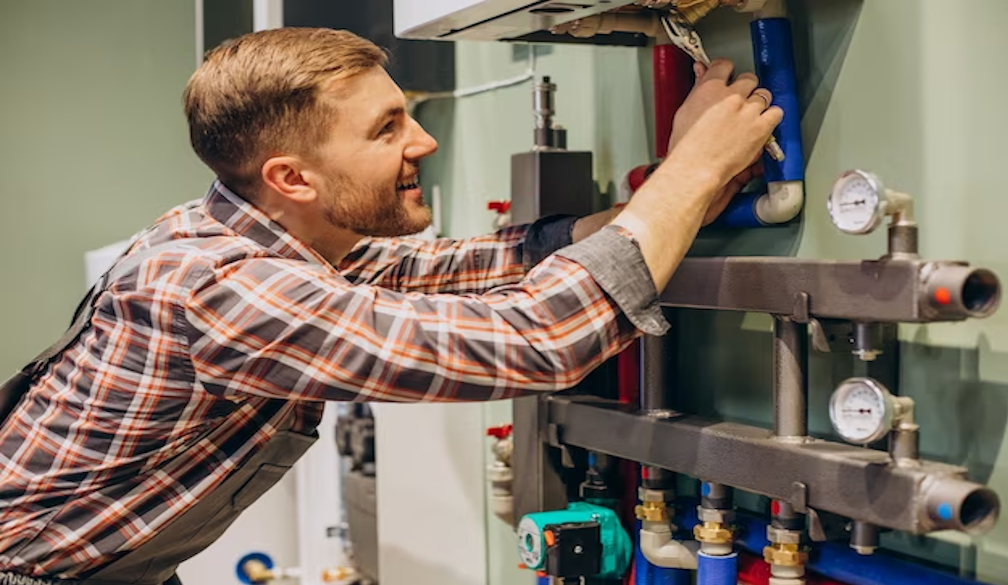How to Prevent Backflow Issues in plumbing

Maintaining a healthy plumbing system is crucial for the overall well-being of your home. One common and potentially hazardous problem that homeowners face is backflow. Backflow occurs when the flow of water in a plumbing system reverses direction, leading to the contamination of clean water with pollutants, chemicals, or sewage.
To ensure the safety of your family and the integrity of your plumbing, it's essential to implement preventive measures to avoid backflow issues. Here are various strategies and best practices by plumber Inner West to safeguard your plumbing system.
Understanding Backflow
Backpressureoccurs when the pressure in the plumbing system exceeds the pressure of the water supply. Common causes include elevated plumbing fixtures, boilers, or pumps. Backpressure can force contaminated water to flow back into the clean water supply.
This happens when there is a sudden drop in water pressure in the supply system. According to plumber Inner West, it can be caused by water main breaks, firefighting activities, or other emergency situations, creating a vacuum that draws contaminated water into the clean water supply.
Preventive Measures
One of the most effective ways to prevent backflow is by installing backflow prevention devices. These devices are designed to allow water to flow in one direction only, preventing any reverse flow. Common types of backflow preventers include:
- Atmospheric Vacuum Breakers (AVB)
- Pressure Vacuum Breakers (PVB)
- Double Check Valve Assemblies (DCVA)
- Reduced Pressure Zone Assemblies (RPZ)
Professional installation and regular maintenance of these devices are crucial to ensuring their effectiveness.
Conduct Regular Inspections:
Regular inspections of your plumbing system are essential for identifying potential issues before they escalate. Inspect all backflow prevention devices and ensure they are in good working condition. Check for signs of wear, corrosion, or damage and promptly replace any faulty components.
Cross-Connection Control
Identifying and eliminating cross-connections is another key step in preventing backflow. Cross-connections occur when there is a direct or indirect connection between the potable water supply and a potential source of contamination. Implementing cross-connection control measures, such as air gaps and backflow prevention devices, can help mitigate this risk.
Stay Informed About Local Codes and Regulations
Stay informed about local plumbing codes and regulations related to backflow prevention. Compliance with these standards is essential for ensuring the safety and integrity of your plumbing system. Work closely with licensed plumbers to ensure that your system meets or exceeds these requirements.
Implement a Regular Maintenance Schedule
Consistent and routine maintenance is key to the long-term effectiveness of backflow prevention devices. Establish a regular maintenance schedule to inspect, test, and service these devices. Professional plumbers can conduct thorough examinations, ensuring that all components are functioning correctly and identifying any potential issues before they escalate.
Test Backflow Prevention Devices Annually
Many local authorities and water utilities mandate annual testing of backflow prevention devices. This testing is critical to confirm that the devices are operating as intended. Certified backflow prevention testers can assess the functionality of each device, making adjustments or replacements as needed to maintain their effectiveness.
Consider Secondary Barriers
In addition to primary backflow prevention devices, consider implementing secondary barriers for an added layer of protection. While these may not be required by all plumbing codes, they can provide an extra measure of security in case the primary prevention devices fail. Consult with a professional plumber to determine if secondary barriers are appropriate for your specific plumbing system.
Monitor Landscaping Practices
Landscaping activities can inadvertently contribute to backflow issues, especially if irrigation systems are not properly maintained. Ensure that sprinkler systems are equipped with the appropriate backflow prevention devices and regularly check for leaks or damaged components. Additionally, avoid using chemicals or fertilizers near outdoor faucets to prevent contamination.
Seal Unused Plumbing Outlets
Unused or abandoned plumbing outlets can become potential points for backflow if not properly sealed. Seal any unused outlets with appropriate devices or methods to prevent the entry of contaminants. This is particularly important for commercial and industrial properties with complex plumbing systems.
Invest in Education and Training
Training your maintenance staff or residents on the proper use and care of plumbing fixtures can contribute significantly to backflow prevention. Emphasize the importance of reporting any plumbing issues promptly and provide guidelines on water conservation practices. Well-informed individuals are more likely to identify and address potential backflow risks.
Emergency Response Planning
Despite preventive measures, emergencies can still occur. Develop and communicate an emergency response plan that outlines the steps to take in the event of a backflow incident. This plan should include contact information for emergency plumbers, shut-off procedures, and guidelines for notifying relevant authorities.
Conclusion
Preventing backflow issues is a proactive and necessary step in maintaining a safe and functional plumbing system. By implementing the preventive measures outlined in this guide, you can safeguard your home or business from potential contamination and health risks associated with backflow. Regular inspections, proper installation of backflow prevention devices, and adherence to local regulations are essential components of a comprehensive backflow prevention strategy. Don't wait for a backflow incident to occur—take action now to protect your plumbing and the health of those who depend on it. If you're reading this and it's too late, make sure to contact an emergency plumber to resolve your problem as soon as possible.

















